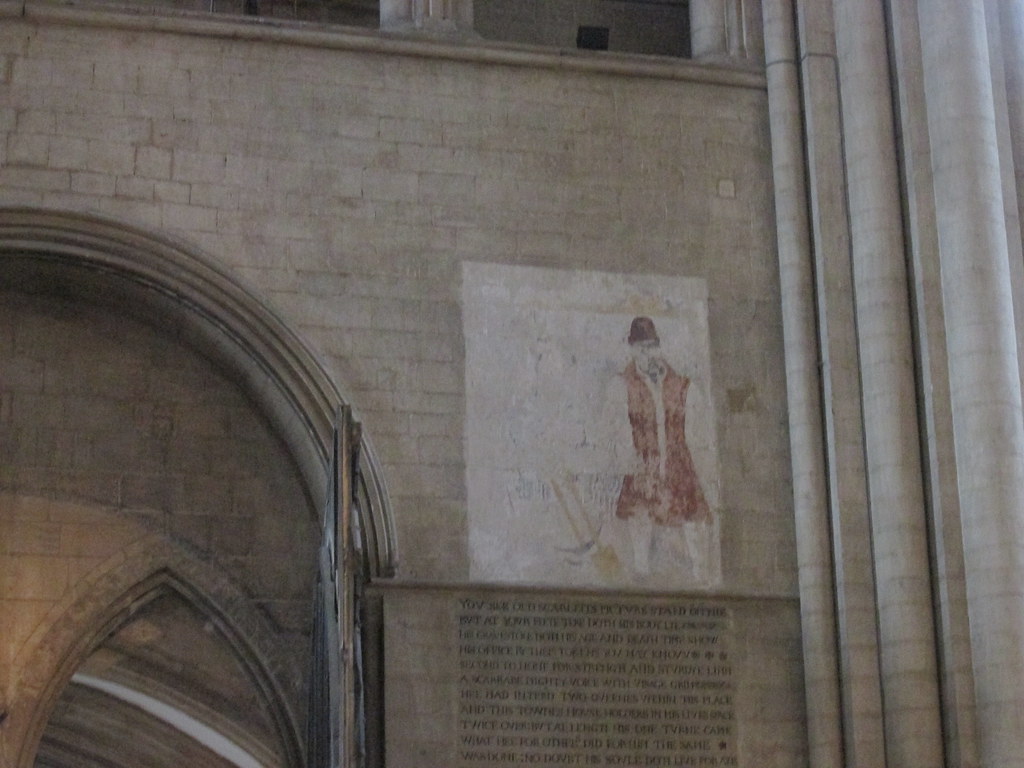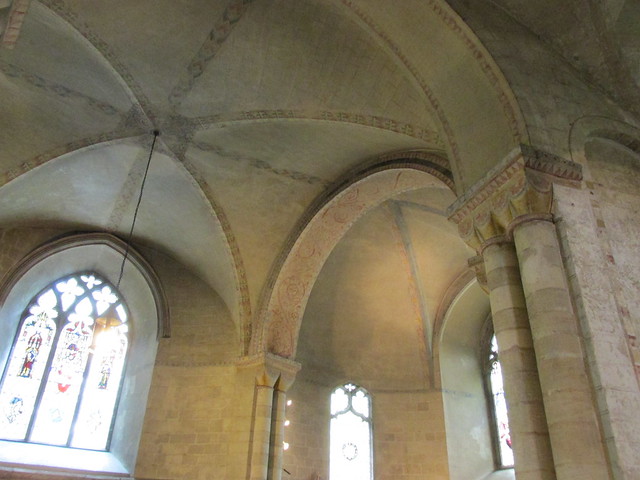 |
| A fair in the old cathedral ruins |
On the night of 14 November 1940 the German Luftwaffe carried out a bombing raid on Coventry and dropped incendiary devices across the city. It was considered a legitimate target because of its concentration of engineering firms: cars, bicycles, aeroplane engines and munitions factories.
There was a story that Britain knew the German bombers were on the way because messages sent by the coded Enigma machines had been intercepted and translated. It was not possible to stop the planes without letting the German government know that Bletchley Park, the UK government's signals base, had cracked the Enigma code and so Coventry was sacrificed. The story has been denied by some former Bletchley Park workers, but like the lady once said, they would say that, wouldn't they?
 |
| Inside the new cathedral |
At the time Coventry city centre was a well preserved medieval town with many original buildings still surviving. Among them was the magnificent cathedral. Its lead-covered roof was a serious victim of the incendiary attack. As the metal was hit, it melted, burned and dripped through the timbers onto the floor below. This devastated the building, which was more or less leveled overnight. Only remnants of the walls, and the tall tower survived, mainly because the floors below the spire were stone and were impervious to the heat.
 |
| The charred cross |
The following morning as workers sifted through the wreckage they found two burned timbers lying in the form of a cross in the wrecked nave. The two were fixed together and the whole thing raised up to act as a symbol of the city's resurrection. That cross still stands in the modern cathedral that lies alongside the remains of the original. Surviving medieval roof nails were also collected and formed, in threes, into smaller crosses. One stands on the old altar at the eastern end of the old building.
In a single night more than 4,300 homes were destroyed, two thirds of the buildings in the city were damaged and a third of the city's factories were wrecked, including the main Daimler production centre. More than 560 people, including nine police officers, were killed.

Coventry has, over the years, become a symbol of peace and reconciliation. A new cathedral, designed by Basil Spence, was constructed in the 1950s alongside the ruins of the old church. It is rich with symbolism, not just because of the charred beams and nails. In the Chapel of Unity are hundreds of paper birds which represent the story of Sadako Sasaki who contracted leukemia after atom bombs were dropped on her home city of Hiroshima. She planned to fold 1,000 origami cranes but didn't finish them before she died.



 Coventry has, over the years, become a symbol of peace and reconciliation. A new cathedral, designed by Basil Spence, was constructed in the 1950s alongside the ruins of the old church. It is rich with symbolism, not just because of the charred beams and nails. In the Chapel of Unity are hundreds of paper birds which represent the story of Sadako Sasaki who contracted leukemia after atom bombs were dropped on her home city of Hiroshima. She planned to fold 1,000 origami cranes but didn't finish them before she died.
Coventry has, over the years, become a symbol of peace and reconciliation. A new cathedral, designed by Basil Spence, was constructed in the 1950s alongside the ruins of the old church. It is rich with symbolism, not just because of the charred beams and nails. In the Chapel of Unity are hundreds of paper birds which represent the story of Sadako Sasaki who contracted leukemia after atom bombs were dropped on her home city of Hiroshima. She planned to fold 1,000 origami cranes but didn't finish them before she died.



